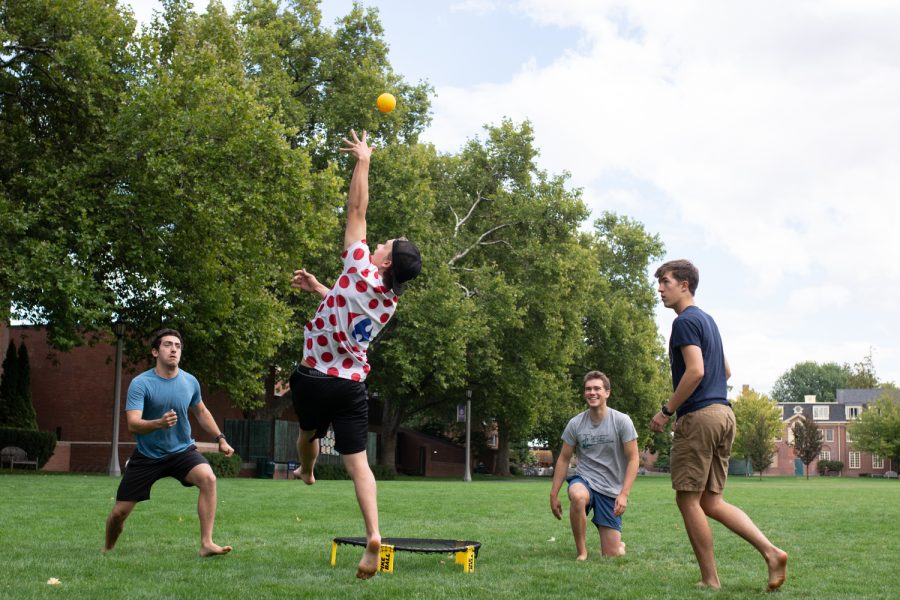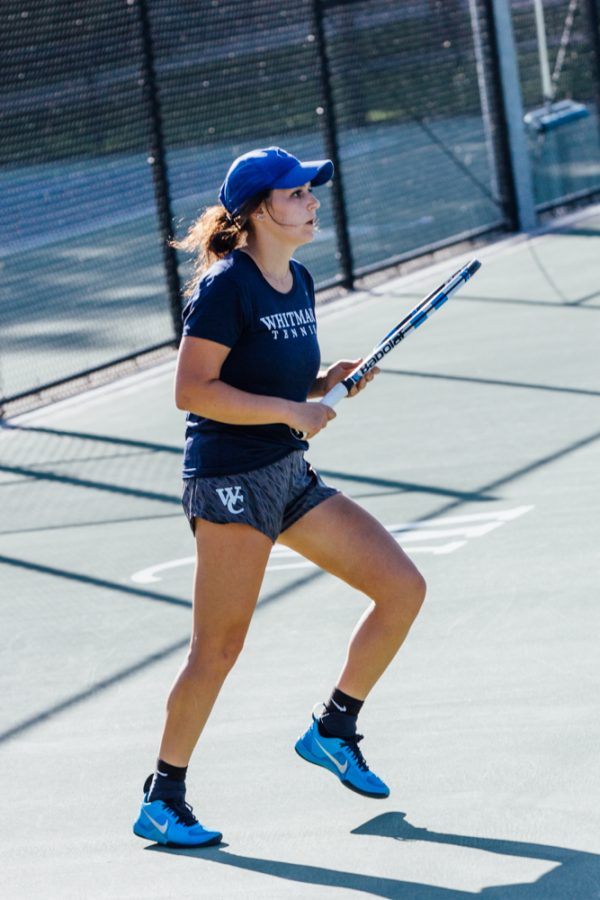Hi, my name is Charlotte Hill! I’m 21 years old, an English major, and entering my senior year at Whitman College. In my blog I will discuss my personal experiences rock climbing at the climbing gyms in my lovely hometown of Seattle. I will also talk about my experience climbing outside when relevant. I will mention big climbing events that are happening in the Seattle area, talk about general outdoorsy things (not just limited to climbing), and occasionally just talk about random aspects of my life that have nothing to do with climbing or the outdoors.
I am an avid rock climber and if you regularly visit the Whitman Climbing Center you may have seen me. I have been climbing since I was 12, and I was on a youth competitive climbing team, called Vertical World (VW) Climbing Team (based out of the Vertical World Climbing gyms) all throughout middle school and high school. When I was 18 I qualified for the USA climbing youth team and had the great opportunity to compete at the Youth World Championships, which were held that year (2009) in Valence, France. This year I competed consistently in a collegiate competition series based out of the Pacific Northwest called the Northwest Collegiate Climbing Circuit (NC3 for short) series and placed 2nd overall for women competitors. I will be the competition coordinator for the Whitman Climbing Team next year, and I am extremely excited that this team will be recognized for the first time as a club sport next year. If you are interested in joining the climbing team, or for that matter have any questions about my blog- now or in the future- feel free to email me at hillcr@whitman.edu.
I owe my success at climbing, and more importantly my great love and passion for climbing to many people: especially the talented VW coach Tyson, Outdoor Program (OP) Director at Whitman and rock climbing extraordinaire Brian Sheedy(the mastermind behind the Whitman Climbing Gym), my very supportive family(especially my parents who took me to many far away climbing events back in the day), and all my climbing friends- Seattleites , Whitties, VW climbing team members, the many great people I have met from other PNW colleges at the NC3 series this year as well as others.
It is my goal to make this blog as accessible as I can to everyone- including non-climbers. Therefore, in this blog entry I will include a comprehensive guide about many important climbing terms, and in other entries I will also try to define key climbing terms. However, this is not an easy task to undertake- rock climbers practically have their own language, so if anything I say doesn’t make sense to you please do not hesitate to email me. I’m very happy to answer questions. My introduction to climbing guide will follow below. If you are already familiar with climbing feel free to skip it since it will probably just repeat what you already know. Sorry this entry is a bit dull-and long! Once all this introductory material is out of the way my blog should get significantly more exciting!
A Comprehensive Introduction to Rock Climbing
General Questions(Q&A)
Q: So rock climbing is about speed, right?
A: This is the most common question I get about rock climbing from non-climbers, and it is somewhat misguided. Speed climbing does exist but it is a relatively recent sector of rock climbing and most commonly occurs in an indoor, competitive environment. In speed climbing, the objective is simple: climb up the wall as fast as you can. Many climbing gyms have started creating speed walls with standardized heights of 15m or 20m and uniform or identical special speed climbing holds that are rotated in different orientations.
Speed climbing aside,rock climbing is actually primarily about difficulty. Most people who do speed climbing also do “difficulty” climbing. So unless, I specifically say, “speed climbing” in my blog I’m usually talking about climbing based on difficulty. Difficulty of climbing is based on a combination of factors: such as types of climbing holds (will discuss in more detail soon), the distance between those holds, the angle of the wall, the length of the given climbing wall and much, much more. The objective of climbing in this case is not speed at all, and if you climb too fast you will probably just get tired. Instead the goal is to climb to the top of the wall without falling.
Q: How do I know which climbs are “hard” and which are “easy”?
A: Obviously, hard and easy are relative terms. But there are climbing ratings that help climbers determine the difficulty of given rock climbing routes. For sport routes (walls generally 30+ feet where use of a rope is highly recommended) in the U.S the Yosemite Decimal System is used. The Sierra Club initially developed this system in the 1930s for grading routes. In most climbing gyms the easiest grade you will find is 5.4-5.5 and the hardest grade you will find is 5.13(expert) and maybe the occasional 5.14. However outside climbs can be as hard as 5.15!! Here’s a general run down of grades: 5.4-5.8 or 5.9 ish=beginner, 5.10- intermediate, 5.11-5.12 advanced, 5.13+-expert, 5. 15- nearly impossible, you’re probably a professional climber who is regularly talked about in climbing magazines and has huge biceps and amazing abs. Also starting with 5.10 there is also letter grades or a, b, c, d- in other words it goes 5.10a, 5.10b ect. until you get to 5.11a- i.e A 5.10b is harder than a 5.10a but easier than a 5.11a.
But that’s not all: There is also a different grading scale for bouldering. Bouldering involves climbing up short walls-generally 10-15 feet, occasionally higher. The use of a rope is not required for this type of climbing but special, mattress like pads, called “crash pads” are used to help break falls and greatly reduce the risk of injury. In the U.S. the Hueco scale is used with v0 being the easiest and v16 being the hardest (found only outside). v0-v1= beginner, v2-v3=intermediate, v4-v6- advanced, v7+-it keeps getting harder and harder
To give you an idea of where I fall on the spectrum I can generally climb 5.12 and boulder v5-v6, occasionally I will climb harder. For instance, yesterday I climbed a v8 but that really doesn’t happen often for me.
That said, grades are subjective!! Inside whoever “set” the route (basically put the climbing holds for a certain route onto the wall) grades the climb and outside the first person to successfully climb a route grades it. Naturally, people have different views of how hard a route is and what feels like a 5.10 to someone may feel like a 5.11 to someone else. Grades are a good guide to help you choose appropriate climbs for your ability level, but it is good to be aware that the difficulty of grades can vary significantly depending on who rated the route.
Q: Can I climb using any holds I want?
A: You of course are free to climb however you wish and using any holds is often a good option if you have never climbed before. However, inside different routes are usually demarcated with tape. For instance, a 5.12 may be marked with red tape and to climb the 5.12 you can thus only use the holds that have red tape for your hands and feet. Sometimes, gym used color-coded climbing holds instead. In this case you may be required to use only red colored holds. Outside climbing is a more flexible. Obviously no tape is used and instead a specific area of a wall constitutes one route. For example the left side of the wall may be a 5.8 while the right side of a wall is a 5.10.
Types of Climbing Holds
Hand holds- very simple, holds you use for your hands
Foot holds- holds you use for your feet, sometimes footholds may be too small to grab with your feet and there is overlap: certain holds are often used for both your hands and your feet.
Jugs- the best holds for everyone: big, positive holds that are easy to grab and slid your hand into. You will often find a lot of jugs on beginning routes.
Crimps- Generally small holds with an edge. Not usually found on beginner routes. Some people hate crimps with a passion but holding onto crimps is one of my best skills as a climber.
Pockets- holds with a hole in the middle of varying sizes. Sometimes you can only fit one finger in a pocket (not fun) but other times you can fit three or even four fingers into one pocket.
Slopers- My worst enemy!! I’m not very good at holding onto these. A sloper is a round hold with few to no edges.
Pinches- often orientated vertically but can also be orientated horizontally, to hold onto this hold you must literally “pinch” the hold or squeeze the hold (basically you wrap your thumb around on side of the hold and one-four fingers around the other side of the hold to create an effective squeezing motion)
Types of Walls
Slab- Wall angle of greater than 90 degrees, wall tilts in from bottom to top, good for beginners because almost all of your weight is on your legs rather than your arms (your legs are naturally bigger and stronger than your arms so it’s always good to use your legs as much as possible when you climb to conserve energy)
Overhang-wall angle less than 90 degrees, hard on your arms and requires great arm strength, thus not necessarily the best type of wall for beginners to start on
Vertical- almost exactly up and down or vertical or 90 degrees
Roof- look up at the ceiling, that is what a climbing roof is like, climbing a roof usually requires upside down (means blood rushes to your head) as well as incredible arm strength and good footwork (careful placement of your feet)- not recommended for beginners at all
Sources:
http://en.wikipedia.org/wiki/Grade_%28climbing%29-information about climbing grades
http://logang.hubpages.com/hub/Indoor-Rock-Climbing-Holds- a lot of great information on different types of climbing holds as well pictures of different types of holds




